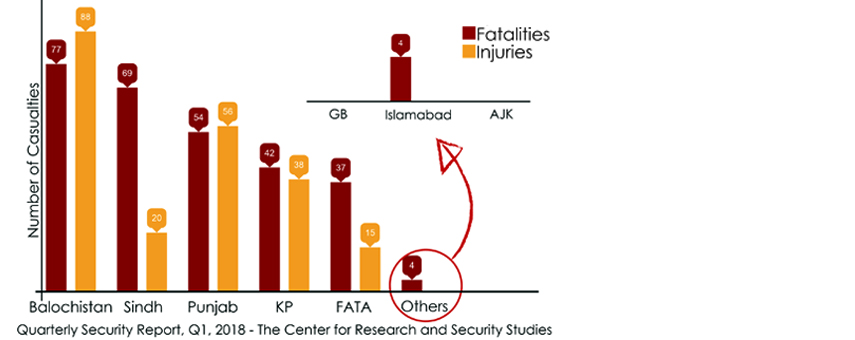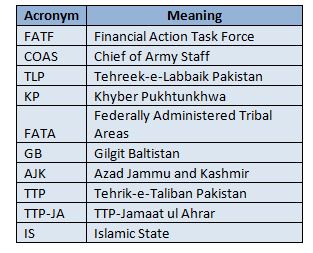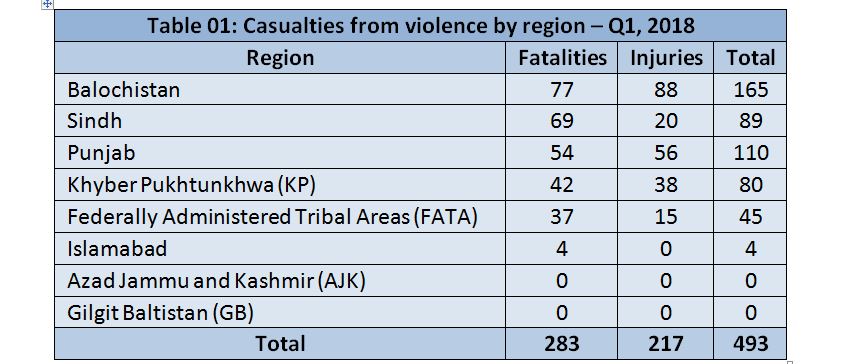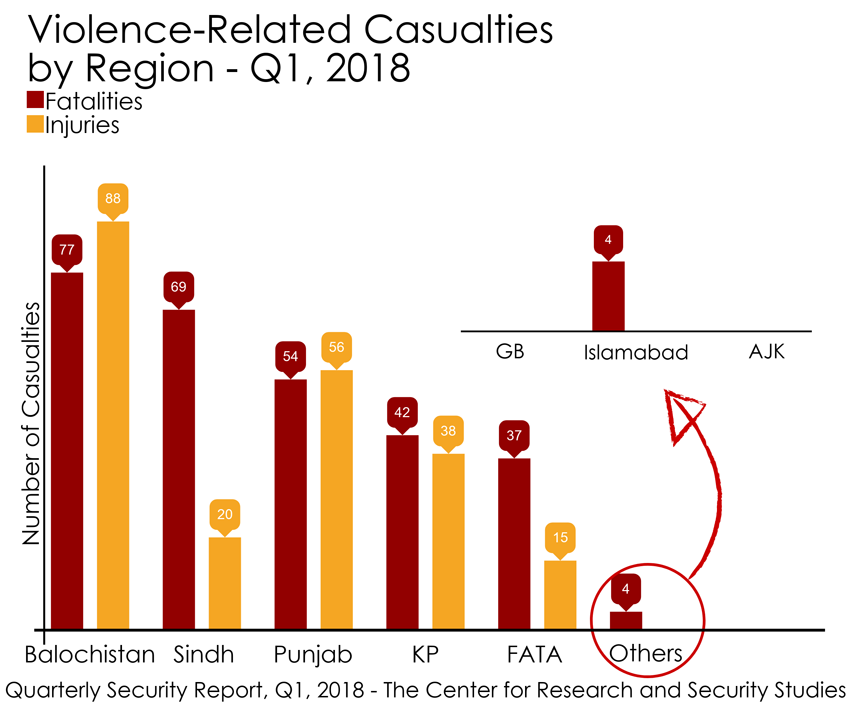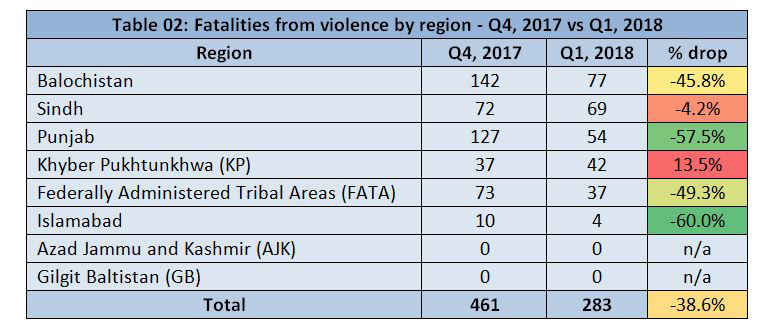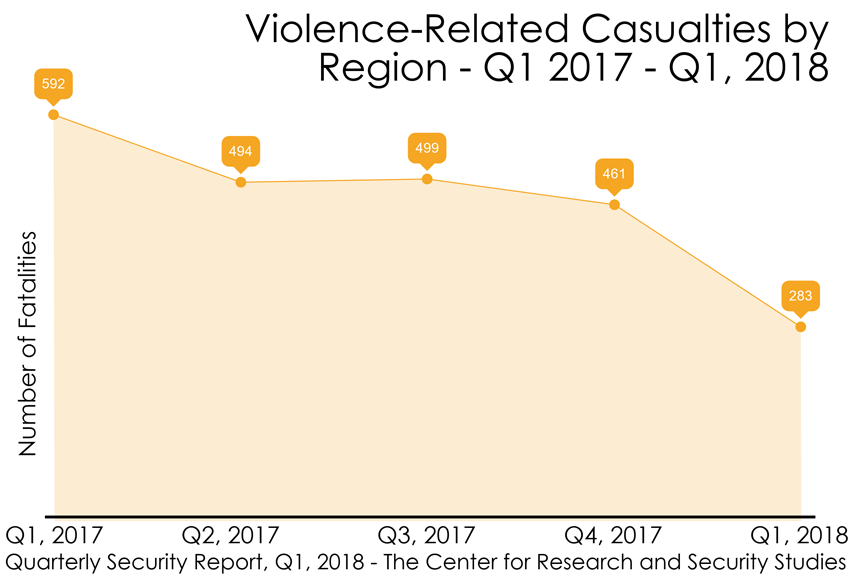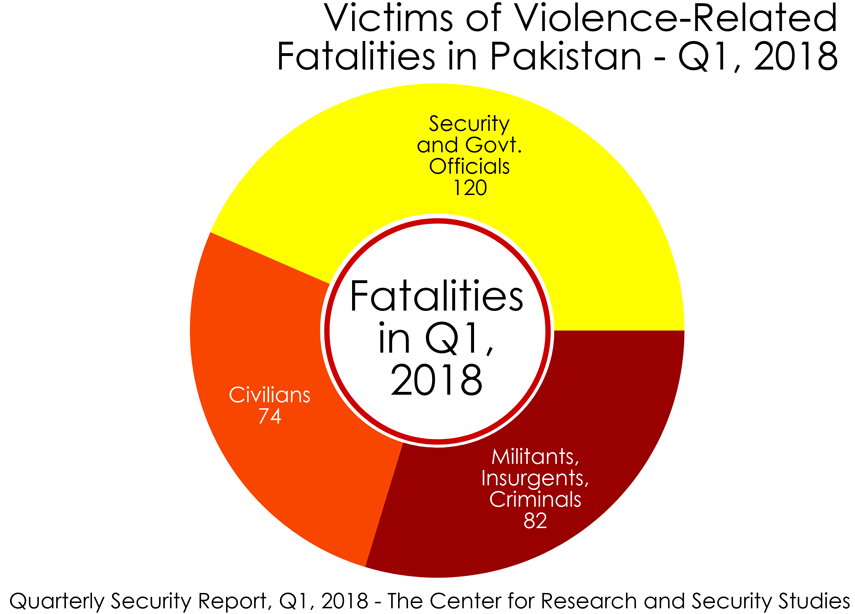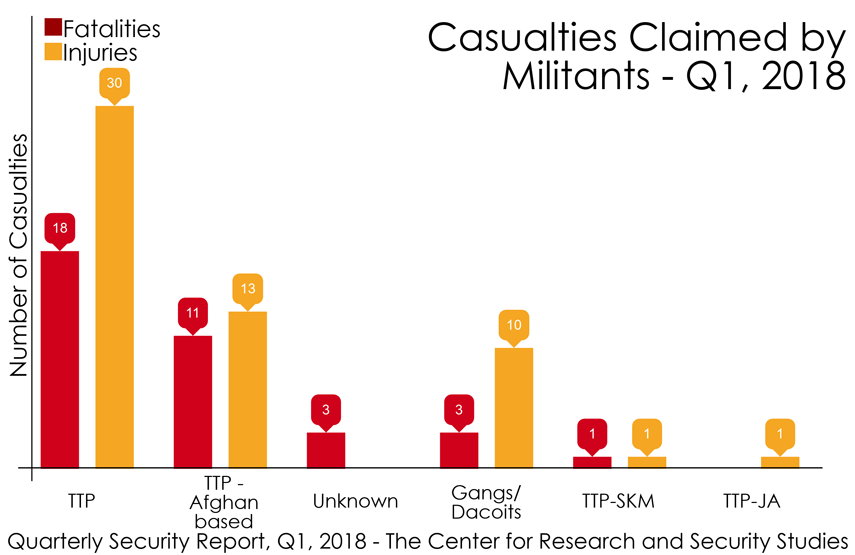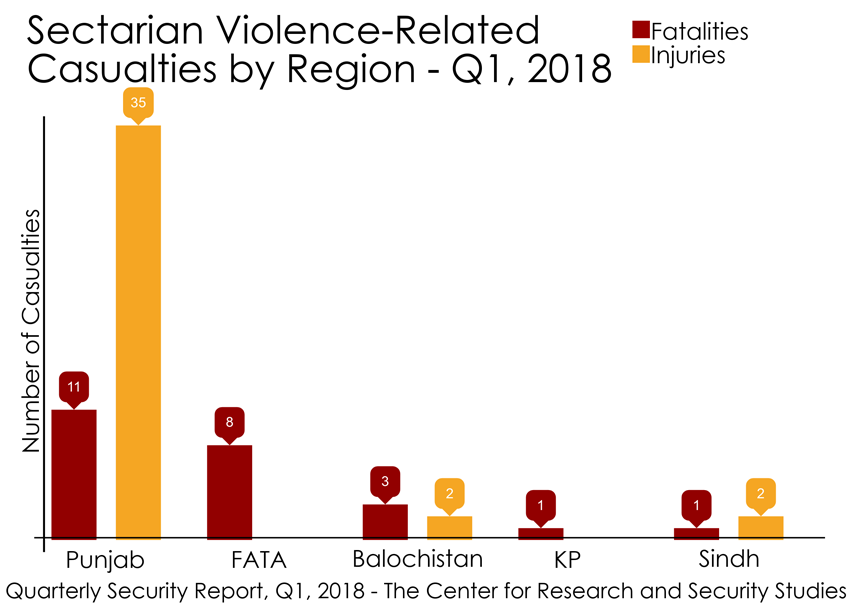There was a significant decline in incidents of militancy and the resultant fatalities during this quarter, but other factors kept Pakistan’s perception as a troubled state in the international limelight. The threat of being included in the Grey-List of the Financial Action Task Force (FATF) also deteriorated relations with Washington, in addition to alarming tweets from the American President.
Pakistan’s relationship with India and Afghanistan experienced hiccups as they continued accusing Pakistan for providing militant sanctuaries. The Chief of Army Staff (COAS) General Qamar Javed Bajwa rejected these accusations, stating “terrorists of all hues and colors” had been defeated in the troubled areas and a few disorganized residual militants were being pursued under Operation Radd-ul-Fasad.
Internally, the echoes of the last year’s sit-in staged by the Tehreek-e-Labbaik Pakistan (TLP) at Faizabad Interchange, Islamabad continued reverberate in politics. While the protestors successfully humiliated the state, the security forces failed to apprehend the two TLP leaders, Khadim Hussain Rizvi and Afzal Qadri against whom an arrest warrant was issued on March 19, 2018. Similarly, harrowing stories of extrajudicial killings by Senior Superintendent of Police Rao Anwar also called into question the methodologies being used by law enforcement to curb crime, and raised questions on a police force that nurtured and protected such deviants.
In January, a congregation of more than 1,800 Ulema issued a fatwa against suicide bombing. While the fatwa failed to convince the militants to stop suicide bombings, a threat issued by the militants against western-style haircuts received quick compliance from the hair dresser’s union of Khyber Pukhtunkhwa.
In summary, it is undeniable that the security operations being carried out by law enforcement agencies are producing results. However, the issue of extrajudicial killings, unchecked religious zealotry, and continued presence of militants continues to threaten the peace, stability and security of the country.
Readers can approach CRSS for information related to this report. Alternately, you may send your queries to mail@crss.pk, directly to Mohammad Nafees, Senior Research Fellow, CRSS – the author of the report (mohammad.nafees@yahoo.com), or Zeeshan Salahuddin, Senior Research Fellow.
Acronyms:
Casualties from violence in Pakistan:
A total of 283 people lost their lives and 217 suffered injuries from various forms of violence that were recorded during the first quarter of 2018. Among all regions of the country, Balochistan suffered the highest number of casualties followed by Sindh, Punjab, Khyber Pukhtunkhwa (KP), and the Federaly Administered Tribal Areas (FATA) (table 01).
A 39% drop was recorded in the number of fatalities from violence during Q1 2018 when compared with the figures of Q4 2017. Despite having the highest number of fatalities among all regions in this quarter, Balochistan still observed a 47% drop in violence from Q4 2017. Only KP showed a rise in the number of fatalities by about 14% (table 02).
Since June 2014, when Operation Zarb-e-Azb was launched to route militants from their hideouts, violence saw an overall increase as miscreants were targeted in FATA, KP, Karachi and Balochistan. Since 2016, however, there has been a steady decline in violence, and this is especially pronounced since Q1, 2017 (table 03).
In most districts, the number of fatalities dropped significantly. A total of 69 districts reported fatalities from violence in Q4 2017, which dropped to 47 in Q1 2018 (table 04).
A significant drop was visible this quarter in all forms of violence, such as armed attacks, clashes with the security forces, dead bodies found, encounters, Improvised Explosive Device (IED) explosions, and suicide attacks. The incidents of robberies and landmine explosions were the only crimes that increased during this quarter (table 05).
Despite the drop in violence, the main beneficiaries seem to be outlaws and militants. While overall violence dropped by 39%, militant fatalities dropped by nearly half (from 161 in Q4 2017 to 82 in Q1 2018). It is also worth mentioning that 11 of these 82 were killed in a US drone strike (table 06). In contrast, security officials showed a marginal 18.6% drop (91 in Q4 2017 to 74 in Q1 2018), and included 38 policemen, 22 army personnel, 8 Frontier Corps (FC), 3 Rangers, and 1 Levies. Civilians also showed a 42.5% drop (209 in Q4 2017 to 120 in Q1 2018).
Most terror attacks were claimed by the Tehrik-e-Taliban Pakistan (TTP) (table 07), accounting for 29 fatalities, including 22 security personnel and 7 civilians. In contrast, TTP lost only four militants in security operations. Of the 11 militants killed in drone strikes, nine belonged to the Haqqani Network the other two were unknown.
Sectarian violence data
Sixty-three people were the victims of sectarian violence during this quarter, including 24 fatalities and 39 injuries (table 08). This is a near 50% drop over Q4 2017. The majority of the victims were reported from Punjab followed by FATA, Balochistan, KP, and Sindh. Although the suicide attack at the Tableeghi Jamaat camp in Raiwind, Punjab targeted the police check post, it can be identified as sectarian violence as the focal point was a religious gathering.
Shia and Shia Hazara communities continued bearing the brunt of sectarian attacks (table 09). While Da’ish or Islamic State (IS) claimed responsibility for most of the sectarian attacks in Q4 2017, it remained inactive during Q1 2018. Only the TTP claimed responsibility for a single suicide attack on the Tableeghi Jamaat camp in Raiwind.

